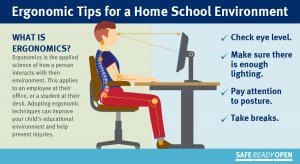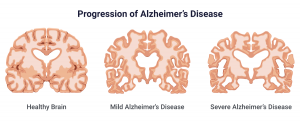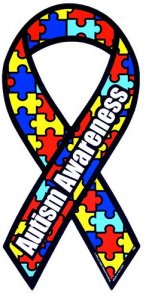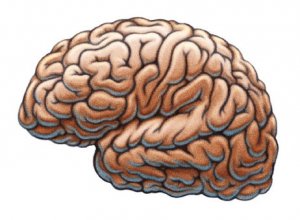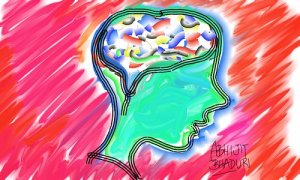A blog written by a plastic surgery nurse who hopes to set the record straight for anyone who has concerns, fears, or questions regarding the safety of breast implants.
Background on Silicone Implants
 The current generation of silicone breast implants were released in April of 1994. From 1994 until the fall of 2006, there were ongoing clinical trials and studies done on the safety of these medical devices. These studies were done due to issues with the previous generation of silicone implants. In November of 2006, the silicone breast implants currently still used today, were deemed safe and approved by the FDA for use in anyone over the age of 22 years old.
The current generation of silicone breast implants were released in April of 1994. From 1994 until the fall of 2006, there were ongoing clinical trials and studies done on the safety of these medical devices. These studies were done due to issues with the previous generation of silicone implants. In November of 2006, the silicone breast implants currently still used today, were deemed safe and approved by the FDA for use in anyone over the age of 22 years old.
Saline versus Silicone
Both saline and silicone breast implants are still available. Though, silicone implants are far superior to saline and give both the patient and the surgeon more options to achieve a natural-looking and feeling result. It should also be noted that regardless of what type of breast implant is chosen, you are not exposed to anything different. Both saline and silicone implants have a shell that is made of silicone, it is just what is inside the implant that differs. Silicone implants are frequently referred to as “gummy bear implants” because they contain a cohesive gel inside while saline implants are filled with saline water.
Current Concerns with Implants
“Can my implants cause cancer or other illnesses?”
In the above video, Plastic Surgeon, Wong Moon, describes that some women are still fearful that silicone implants may cause autoimmune issues or cancer, even though this has been disproven. He assures patients that there is no increased risk with silicone implants, though a follow up exam or imaging could rule out any concerns.
Breast Implant Illness?
There have been reports of some women experiencing physical and psychological symptoms that they blame on their implants. So far, there is no proof that breast implant illness (BII) exists. Though, implant companies and physicians are doing extensive ongoing research to see if there is a link between symptoms experienced and breast implants. Many of the reported symptoms are vague and can be associated with other conditions, some reported symptoms are:
- Fatigue
- Muscle/ joint pain
- Hair loss
- Anxiety/ depression
- Headaches
If all other conditions are ruled out and the patient chooses to undergo an explanation surgery, she must be fully made aware that her symptoms may not resolve. Though some women who believe that symptoms they have experienced are due to their implants had them explanted and reported an improvement or that their symptoms disappeared. Dr. Andrea Pusic, a professor of surgery at Harvard Medical School, commented on the matter that “there is potential for subconscious bias to believe their symptoms have gotten better” (2).
In the above video, supermodel Angie Everhart, reported that she suffered from BII and underwent an explantation surgery. Though she does note that she had no resolution in her symptoms she had attributed to her implants.
Textured Implants Recall?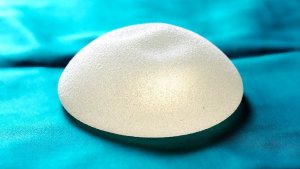
In July of 2019, Allergan, voluntarily recalled their textured breast implants. Textured devices were recalled due to a link discovered with these devices and an increased incidence of Breast Implant Associated Anaplastic Large Cell Lymphoma (BIA-ALCL) (1). On the same day of the recall being issued, various news networks reported that the recall was due to a substantial increase in the risk of breast cancer. Understandably, this resulted in every woman who has breast implants running to the phone to call her plastic surgeon with extreme levels of worry.
The FDA has since advised that the “recall” is of the devices that have not yet been implanted, and that if a patient is not experiencing symptoms of BIA-ALCL, removal of the textured implants is not recommended as the risks of surgical complication are more likely than the risk of developing this rare lymphoma.
The signs or symptoms of BIA-ALCL include breast swelling (typically on one side) in the majority of cases. Additionally, some patients reports a lump in their breast or in their axilla (underarm). BIA-ALCL can be easily diagnosed with ultrasound and and the treatment for this rare lymphoma is removal of the implants and the capsule (scar) around the implants.
Above is a depiction of one of the media reports after Allergan’s recall of textured breast implants. Dr. Jennifer Ashton, an OBGYN and TV personality, inappropriately reported on Good Morning America, spreading misinformation and instilling fear into women across the nation. It would have been more appropriate for a plastic surgeon to speak on this matter. Dr. Ashton reported “mostly seen with the gummy bear or textured implants, which are actually used more often in reconstruction.” It should be noted that not all “gummy bear” implants are textured, most in fact, are smooth, and the term just refers to silicone implants in general. Additionally, gummy bear implants are very frequently used in both aesthetic and reconstructive surgeries.
Still Unsure?
If you have lingering concerns or questions on the safety of breast implants, you should consult with a Board Certified Plastic Surgeon. If you do not have a plastic surgeon, the American Society of Plastic Surgeons is a great resource for both information and to find a board certified plastic surgeon to set up an appointment with. Below is their website: https://www.plasticsurgery.org/
As previously stated at the beginning of this post, the current silicone implants on the market were created in 1994 and are still being studied today! That means that for nearly 27 years these medical devices have been scrutinized, and guess what, the smooth round silicone implants (the best kind) have not changed! Name another medical device with that much science behind it…. I will wait 🙂 Thanks for reading!
____________________________________________________________________________________________
References
- (1) Asbery, J. (2020). Textured Breast Implants a social media crisis? Dissector, 48(2), 12–14.
- (2) Could your breast implants be making you sick? (2020). Harvard Women’s Health Watch, 27(6), 4–5.




